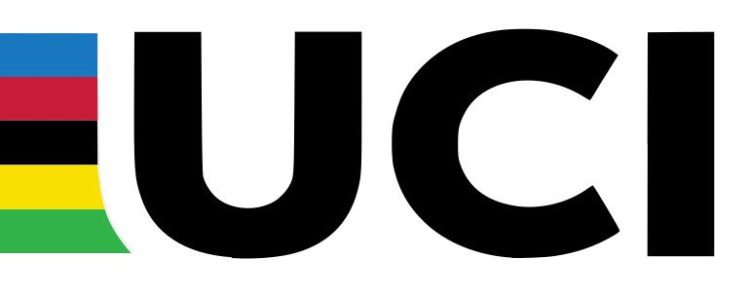The Power of Strength Training for Cyclists
Cycling, a sport many love, is often associated with endurance and cardiovascular fitness. However, the importance of strength training in enhancing cycling performance is often overlooked. This article delves into the significance of strength training for cyclists, highlighting key exercises and principles to follow.
The Significance of Strength Training for Cyclists
Strength training is not just about building muscle; it’s about enhancing overall cycling performance. A stronger cyclist can produce more power with each pedal stroke, making climbs easier and sprints faster. According to the Journal of Sports Science, incorporating strength exercises can lead to a 15% increase in sprinting efficiency.
Benefits of Strength Training for Cyclists
Improved Power Output: A direct correlation exists between leg strength and cycling power. Stronger legs can generate more force, leading to faster speeds.
Enhanced Endurance: Strength training improves muscle efficiency, allowing cyclists to maintain a consistent pace for longer durations.
Better Riding Posture: A strong core supports the spine, ensuring optimal posture, reducing fatigue, and preventing back pain.
How Strength Training Aids in Preventing Injuries
Cycling is a low-impact sport, but that doesn’t shield cyclists from the risk of overuse injuries. The repetitive motion, especially during long rides, can strain certain muscle groups and joints. Strength training is a protective shield, fortifying the body and making it more resilient to these strains and stresses.
The American Orthopedic Society has highlighted the importance of strength training for cyclists. Their research indicates that incorporating strength exercises into a cyclist’s routine can significantly reduce the risk of common injuries. Notably, ailments like IT band syndrome and patellar tendonitis saw a reduction risk of up to 50% among those who engaged in regular strength training.
Top Strength Exercises Every Cyclist Should Know
Core and Lower Body
Back Squat/Goblet Squat: These foundational exercises target the quadriceps, hamstrings, and glutes, muscles heavily used in cycling.
Pistol Squats: This unilateral exercise ensures both legs develop equally, preventing imbalances.
Bulgarian Split Squat: A deep lunge variation that targets the hamstrings and glutes, essential for powerful pedal strokes.
Deadlift: Beyond the legs, this compound movement strengthens the lower back, a crucial area for cyclists.
Upper Body and Flexibility
Spiderman Pushups: A dynamic pushup variation that strengthens the chest and arms and improves hip flexibility.
Pull-Ups: Essential for developing a strong upper back, ensuring riding stability.
Dumbbell Rows: This exercise targets the lats and rhomboids, muscles that support posture during long rides.
Stability and Endurance
Planks: Beyond the traditional plank, side planks and dynamic variations can enhance core stability, which is crucial for efficient power transfer while cycling.
4 Key Principles for Effective Strength Training in Cycling
The Power of Periodization
Training for any sport, especially cycling, requires a dynamic approach. Sticking to the same routine can lead to stagnation and hinder performance improvement. This is where periodization comes into play. Periodization is the systematic planning of athletic training, where different facets of training are emphasized in various phases. By cycling through endurance, strength, and power phases, athletes can ensure they’re targeting all aspects of their fitness.
Moreover, periodization is not just about physical growth but also mental preparedness. Cyclists can stay motivated and engaged by introducing variety and targeting different training goals. This approach ensures continuous growth, prevents training plateaus, and allows optimal recovery, setting the stage for peak performance when it matters most.
Focus on Functional Movements
When it comes to strength training for cyclists, specificity is key. It’s about building the right muscle that directly benefits cycling performance. Functional movements mimic the actions and motions of cycling, ensuring that the strength and endurance gained translate directly to the bike.
For instance, a squat can simulate the power phase of a pedal stroke, while a plank can help build the core strength needed for long rides. By focusing on these functional movements, cyclists ensure they’re getting stronger and getting stronger in a way that enhances their cycling prowess. This specificity can make the difference between a good cyclist and a great one.
The Importance of Gradual Progress
While pushing oneself to the limits is tempting, understanding the value of gradual progress is crucial. Just as Rome wasn’t built in a day, true strength and endurance are cultivated over time with consistent and methodical effort.
Adding weight or resistance too quickly can lead to strain, overuse injuries, or long-term damage. It’s essential to listen to one’s body, recognize its signals, and progress at a challenging yet sustainable pace. By adding weight methodically and ensuring proper form, cyclists can build a strong foundation that supports their goals. This approach ensures safety and guarantees long-term success and resilience against potential injuries.
The Need for Rest
Muscles grow during rest. Incorporating rest days and ensuring adequate sleep is crucial for muscle recovery and growth.
Unlock Your Ultimate Cycling Potential with MyWhoosh
While strength training is a foundational element for cyclists, integrating it with virtual cycling can further enhance the overall experience. MyWhoosh offers a platform for those keen on elevating their indoor cycling journey. It provides tools to track workouts, nutrition, and recovery, all while connecting with a community of like-minded enthusiasts.
Features of the MyWhoosh platform:
Virtual Cycling Routes: Experience diverse terrains from around the world, from Belgium’s picturesque landscapes to challenging mountain trails.
User-Friendly Interface: The app is designed for easy setup across various devices, including iOS, Android, and PC.
Engaging Community: Connect with cyclists worldwide. Participate in group rides, races, and events, fostering camaraderie and friendly competition.
Personalized Avatars: Customize your virtual avatar with a variety of accessories and kits, allowing for a unique representation in the virtual world.
Regular Updates: The MyWhoosh team is committed to providing users with the latest features and improvements, ensuring a dynamic and up-to-date virtual cycling environment.
For those looking to combine the benefits of strength training with the excitement of virtual cycling, MyWhoosh offers a blend of realism, challenge, and community engagement. Dive into MyWhoosh today and experience the thrill of real-world cycling from the comfort of your home.






















